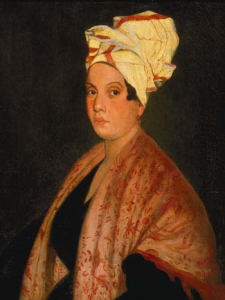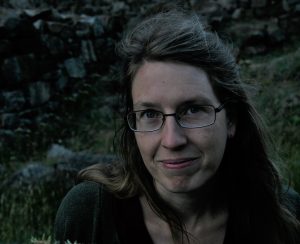Tales of witches give insight into modern-day struggles, empowerment, and how to navigate our lives in Kathryn Nuernberger’s collection of essays The Witch of Eye.
Denounced and interrogated, tortured and burned. Kathyrn Nuernberger recounts and investigates the stories of witches, women persecuted for being something other than what their world demanded. The essays accomplish what essays do best. They dive into these lives to see what the past can reveal about us and our world today. Or as the author says: “I wonder about … what in each of us is a little bit witch.”
Crones and Cunning Women
Known by many names, witches occupy a place in our collective understanding. But Nuernberger lifts them from the abstract. Like the noblest of spells, she brings them to life and gives voice to their fates. Readers follow their individual stories through the collection.
Agnes Waterhouse, whose daughter confesses to have seen her mother change their cat into a toad. Maria Gonçalves Cajada, a Brazilian sorceress accused of creating storms to shipwreck Portuguese vessels on pirate islands. Marie Laveau, in what was truly a feat of magic, navigated the complex laws of land ownership to secure a financial future for her and her children.
In each case, Nuernberger looks within the potions and trials to ask important questions about why: the motives, their connection to history and human nature. What do these stories tell us about the needs and fears of humans back then? And what do they illuminate now?
Tangled Vines
It quickly becomes clear that the past not only reflects the present, but the two are inextricably entwined. The essays make all-too-tragic connections between the stories of persecution and headlines today. From the wrongful conviction of Black youth to sexual assault investigations. Notably, the deception in interrogation methods, with authorities “inventing the proof they were desperate to receive.”
She also turns to the Earth, the roots and wildflowers that bring healing—and condemnation. They lead her to reflections about her own garden, about fracking and the tainted water in Ozark mining towns.
She looks at the larger forces behind the treatment of the women in these stories and finds that “The history of witches is a history of need.” The need to create a system of rational belief. The need to embody the sins of a community in an “other”. The need to keep the lesser parts of ourselves on the outside, to maintain an “us” and “them”.
Readers will find no shortage of opportunities to link the lives and issues in The Witch of Eye to the events of today’s world. And all of us can find ways to navigate our way forward.
Learning How to Live
Along with the stories of others, readers accompany Nuernberger as she investigates her own life. She contemplates the place of love and desire in her marriage, and whether to separate from her husband. She witnesses through her daughter how the unwanted kisses of a young boy at school demonstrate how early we begin to form our expectations about the world. And at her side are the witches, the myths, the literature that serves as a guide for how to live.
She draws in philosophy and art, from Foucault to The Crucible, from how J.M.W. Turner captures fire in his paintings to the many ways in which one can understand a rose. She casts a kaleidoscopic eye toward her life and world, and creates her own spell.
Readers, too, are invited to reflect on how history, art, and literature have influenced their beliefs. They can ask what signposts they have found as they move through life, and which ones they can look to today.
In the end, the lessons that we can learn from witches may be the very desires that drew suspicion onto them. They dared not to conform, insisted on inventing themselves, and refused to apologize in the pursuit of a more just world. As the author notes, “it is helpful to remember her crime was never that she displayed too little of her power.”
Photo: Marie Laveau, portrait by Frank Schneider
Discover more and find discussion questions for The Witch of Eye for your next group meeting!
Visit the author’s website.



